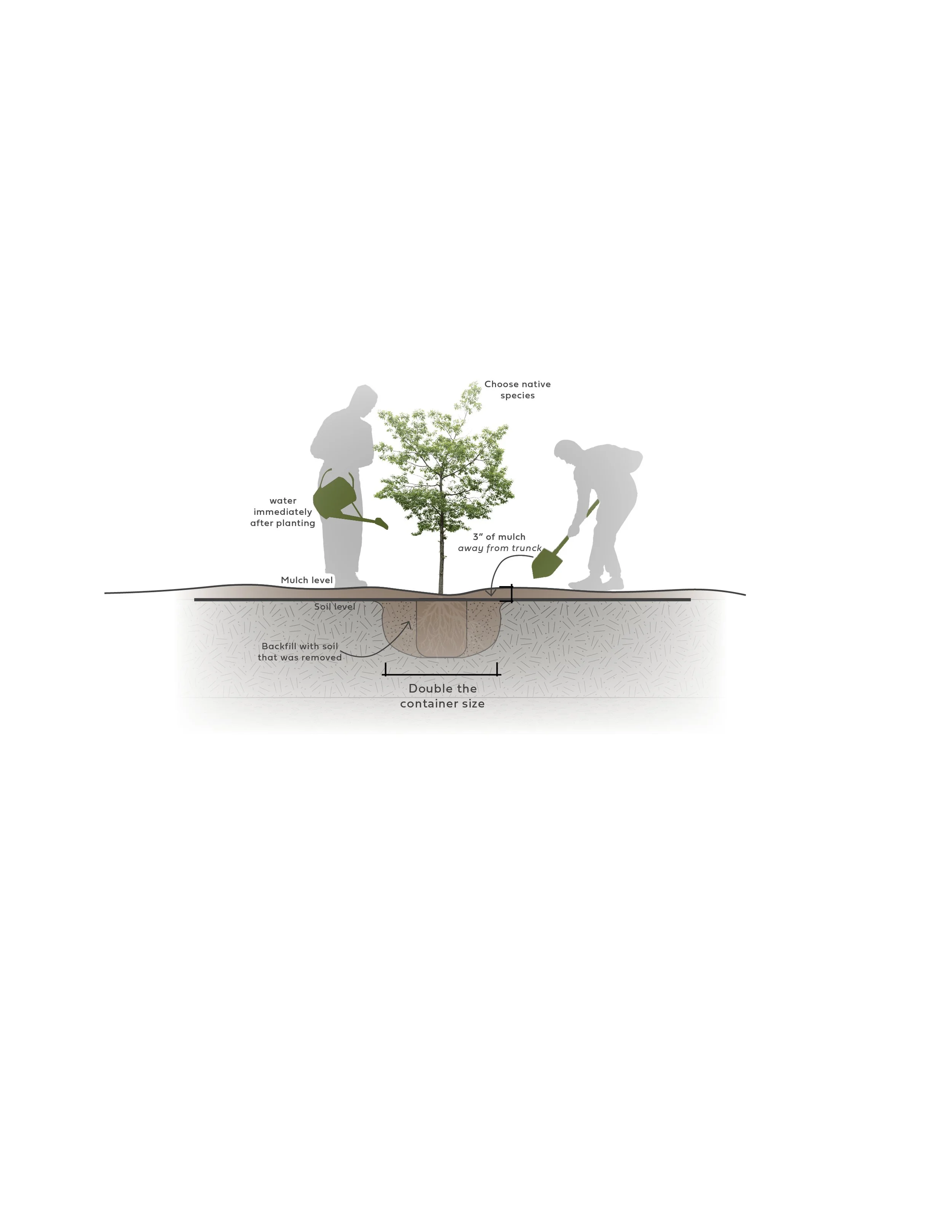TREE PLANTING
PURPOSE
To increase biodiversity, create pollinator habitat, restore soils, increase shade, and improve woodland health.
MATERIALS
Tools needed:
gloves
long-sleeved shirts and pants recommended
soap and/or lotion for poison ivy treatment
spade or sharpshooter shovel if planting live plants
buckets, carts, or wheelbarrows
Plant material for installation:
container plants or plugs
bare root saplings or shrubs
live root grasses and forbs
Amendments:
single-grind mulch or straw
compost
SAFETY
Be aware of snakes, scorpions, or fire ants that may be living under rocks or logs.
Use sharp tools responsibly.
Stay aware of fellow workers to avoid hitting them with brush or tools.
Poison ivy is a common understory plant in many areas of the park. Avoid coming in contact with any part of this plant. Wear long sleeves and pants to avoid skin contact.
Identify the planting area. Prioritize areas of recently-removed invasive species, thin vegetation, bare soil, eroded slopes, low plant diversity, or high visibility.
Schedule planting. Most live planting should occur from November to February to allow plants to establish before the heat of the summer.
Source plant material. Species should be native to the area and suited to the water and light conditions. Plants should be the smallest size suitable for the circumstances.
Establish clear boundaries with fences, rocks, logs, brush, or biodegradable straw logs (also called mulch socks or straw wattles) that are durable and deter foot traffic.
Do not remove native plants.
Arrange plants, considering their mature size and assume 50-75% survival.
Ensure holes for planting are twice as wide as the plant’s container and the plant is planted to full depth, flush with the soil surface.
After setting plant to the appropriate depth, fill hole with excavated soil. Ensure soil around the plant is firm and without voids.
Water plants immediately after planting.
Container plantings should be mulched with a 3” layer of wood mulch. Take care to not bury container plants with mulch or pile mulch at the base of the stem or trunk. Mulch may be sourced locally from PARD or arborists, and should be free of trash and invasive species.
Plan for maintenance. Long-term success requires that the new plants have sufficient water, are not being outcompeted by invasive species, and are not impacted by erosion issues.
METHODS: CONTAINER PLANTINGS
Diagram of a successful planting

